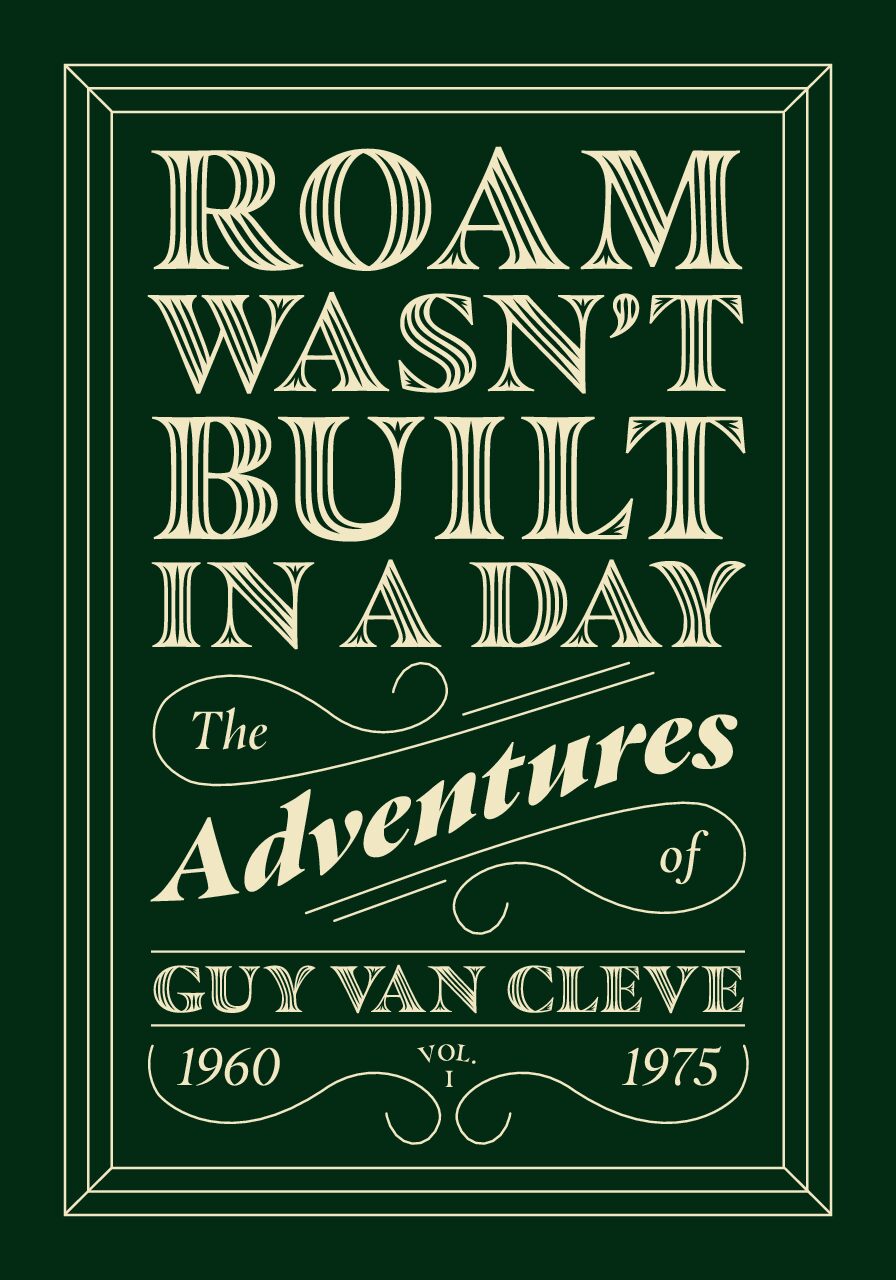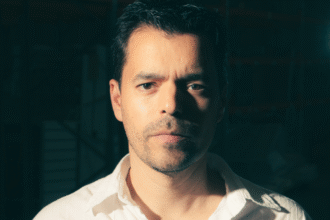“War of a Thousand Peoples”, an epic novel by Víktor Waewell, delves into a crucial and little-known period in Brazilian history: the indigenous revolt in the so-called Confederation of Tamoios. This epic unfolds in battles fought between indigenous people and Portuguese in Guanabara Bay, in the Santos Estuary and in the dense forests near Vila de São Paulo. Based on extensive documentary research and the analysis of historians, the book accurately relives these events, following the success of its previous title, “Novo Mundo em Chamas”, which reached the top of sales on Amazon and was a semifinalist in Oceanos 2021, a prestigious literary award in the Portuguese language.
The plot follows Afonso, a Portuguese warrior who seeks peace by selling his armor and leaving for Brazil. However, upon seeing the coast of Guanabara Bay, he is surprised by cannon blasts. In the middle of the entrance to the estuary, he witnesses a naval battle between Portuguese ships and hundreds of indigenous canoes, an event prior to the formation of the city of Rio de Janeiro. This conflict, known as the Confederation of Tamoios, represents a large-scale war between indigenous peoples and slaveholding nobles.
Afonso dives into 16th century Brazil, where he experiences a story of love, struggles and tragedies alongside Aiyra, a native woman seeking revenge against the Portuguese. Meanwhile, other stories intertwine, such as that of Sebastião, a templar in search of enrichment in the slave trade, and that of Heloísa, a prostitute determined to never sell herself for money again.
The unique narrative offers an immersive experience, transporting the reader directly to the scenes. With a style consolidated since “New World in Flames”, the author weaves in “War of a Thousand Peoples” a plot full of love and hate, friendships and betrayals, all intertwined with touches of humor.
The book “War of a Thousand Peoples” delves into the narrative of the so-called Confederation of Tamoios, a little-known episode in Brazilian history. How did the inspiration come to bring this moment into the context of an epic novel?
That’s precisely the inspiration. Our greatest indigenous revolt, which saw decades of battles across the current Southeast of Brazil, is unknown to the general public and even to historians. In addition to that major war, there was one of the most important events in the history of the world, which was the meeting between the two sides of the human journey, separated more than ten thousand years before, at the end of the last Ice Age. The clash of civilizations, with their very different customs and worldviews, is fascinating and at the same time a critical turning point.
Its protagonist, Afonso, is a Portuguese warrior in search of peace in 16th century Brazil. How does the conflict between indigenous people and Portuguese shape this character’s path?
The nobles would not let a Portuguese with battle experience simply become a farmer. For plantations, Portuguese masters already had indigenous slaves. To care for these slaves, they relied on Italian and German overseers. So, as soon as he arrived in Santos, the then Portuguese capital in the region, Afonso soon realized his own foolishness when he found himself drawn into the conflict between nobles and enemy chiefs.
The plot involves different plots, such as the love story between Afonso and Aiyra, as well as characters with different trajectories, such as Sebastião and Heloísa. How do the complexity of these narratives intertwine throughout the book’s plot?
I like the lives of ordinary people. I want to show how a boy gets a girl, how a man has fun on his day off, what is eaten at a nobleman’s table or at the village sale, things like that from day to day. This also helps to generate identification for the reader, who realizes that, although in a different situation, these were people like others. I have active characters on both sides, with their dreams, fears, mistakes and successes. In addition to painting a realistic picture of the time, this contributes to the effect that I love, which is that the reader cannot stop reading, because at every step there is always a lot at stake for different people.
The work is praised for the vivid way it presents historical events. How do you balance historical fact with fiction to create such an immersive experience for the reader?
My principle is to create a story that does not go against the sources. It is not very different from a historian, who, based on material evidence, imagines what happened at a certain historical moment, often using what would be plausible, reasonable or probable. The difference is that, in fiction, I necessarily need to fill in the gaps. For example, we don’t often have specific cooking recipes from ancient times, so in historical fiction, food is almost always seasoned with educated inference. Thus, in my work, most of the characters and the main events are real, based on research and documents, and, to link and generate a vibrant experience for the reader, I use resources specific to literature. And that’s where my writing style comes in, generating a vivid experience, as if the reader were inside the scene, having that experience with the character. Many say that they see themselves transported to the work, connected at the level of the senses, and I am very satisfied, because that is what it was made for!
The book is based on in-depth research and evaluation by historians. What was the research process like to ensure the reliability of the events portrayed?
I am strict with the historical part, especially because I know that I deal with sensitive topics. So I like to make sure of what I’m doing. Field work alone took more than two months, visiting each location on the project. It’s even funny, because my first book takes place in Pernambuco and many people from Pernambuco think I’m a local writer, given the detailed geographical descriptions. Will they now say that this Minas Gerais native is from Rio or São Paulo? In addition to field research, back in air conditioning, for more than two years, I immersed myself in primary sources, such as letters that the Jesuits sent to each other, as well as reports from people who lived with the native peoples at that time, such as Andre Thévet, Jean de Léry and Hans Staden, and also official documents, such as the famous letter by Pero Vaz de Caminha. Finally, I took into account the interpretation left by our main historians, whether classic or modern, such as Gilberto Freyre or Sérgio Buarque de Holanda.

Between love, hate, friendships and betrayals, the plot carries a vast spectrum of emotions. How did you explore these aspects to make the narrative more engaging?
When a book has a certain number of pages that, as João Ulbaldo would say, makes it stop dead in its tracks, I think it’s important to explore human emotions, including hints of humor. This is what makes the narrative, always moving forward, remain fresh in the reader’s eyes. Furthermore, I like to tell one scene at a time, according to the different characters’ points of view, and it would be impoverishing for them all to have similar emotions. So, this is an intentional effect, but it is produced organically.
The book also includes a Historical Note at the end, highlighting the academic rigor of the research carried out. How does this note complement the reader’s experience at the end of the journey through the novel?
I believe that fiction is an incredible way to learn history. However, we often watch films and read books that do not explain where the line between fiction and reality is, so that we end up with doubts or even learn something wrong or inaccurate. Because of this, I make a point of leaving this explanation to readers, which is very well received by them. If you look at reviews on Amazon, you will find lots and lots of people praising this, which they often call the icing on the cake. I also see this space as a moment for me to write in my own voice, for the reader to get to know me a little better.
In your opinion, how important is it to rescue little-known historical episodes, such as the Confederation of Tamoios, through fiction?
I am convinced that people need to know where they came from to make good decisions in the present. What we see in Brazil is a disaggregated people, people who pass each other without recognizing each other, people who do not understand that they have a common origin and destiny. It is good to be clear that we have a serious problem with the school curriculum, and it would be incredible to teach the basics there, but, even if we had a well-balanced curriculum, fiction would continue to be essential, because, when learning through fiction, it is not just at the level rationally, but also emotionally, in empathy, which makes all the difference. A good example of this is how much people rightly sympathize with the drama experienced by the Jews in the Holocaust, but we do not have the same perception of Native American people, enslaved black people and many other examples in Brazil and around the world.
Praise from historians such as Náuplia Lopes and Gláucio Cerqueira highlights the solidity and quality of the book’s historical research. How was your reaction to these compliments?
Look, it was a mix of joy and relief. As much as I am very serious and only I know how much I dedicate myself to delivering the quality that readers deserve, literary work is lonely, so hearing compliments like that from qualified people brings enormous joy, along with a feeling of duty accomplished.
You’ve already mentioned that “The War of a Thousand Peoples” is an epic. How would you describe this book to those who have not yet had contact with the work and are curious to know its plot and historical context?
“War of a Thousand Peoples” is for those who like a book that is impossible to put down, one that you start reading at night and have to be careful not to see the daylight before closing it. It’s an adventure that moves, makes people vibrate, cry and laugh, with captivating characters on both sides. And, of course, everything is set at a fascinating and extremely important moment in our History, our greatest indigenous revolt, with battles throughout the Rio-SP axis.
Follow Víktor Waewell on Instagram





